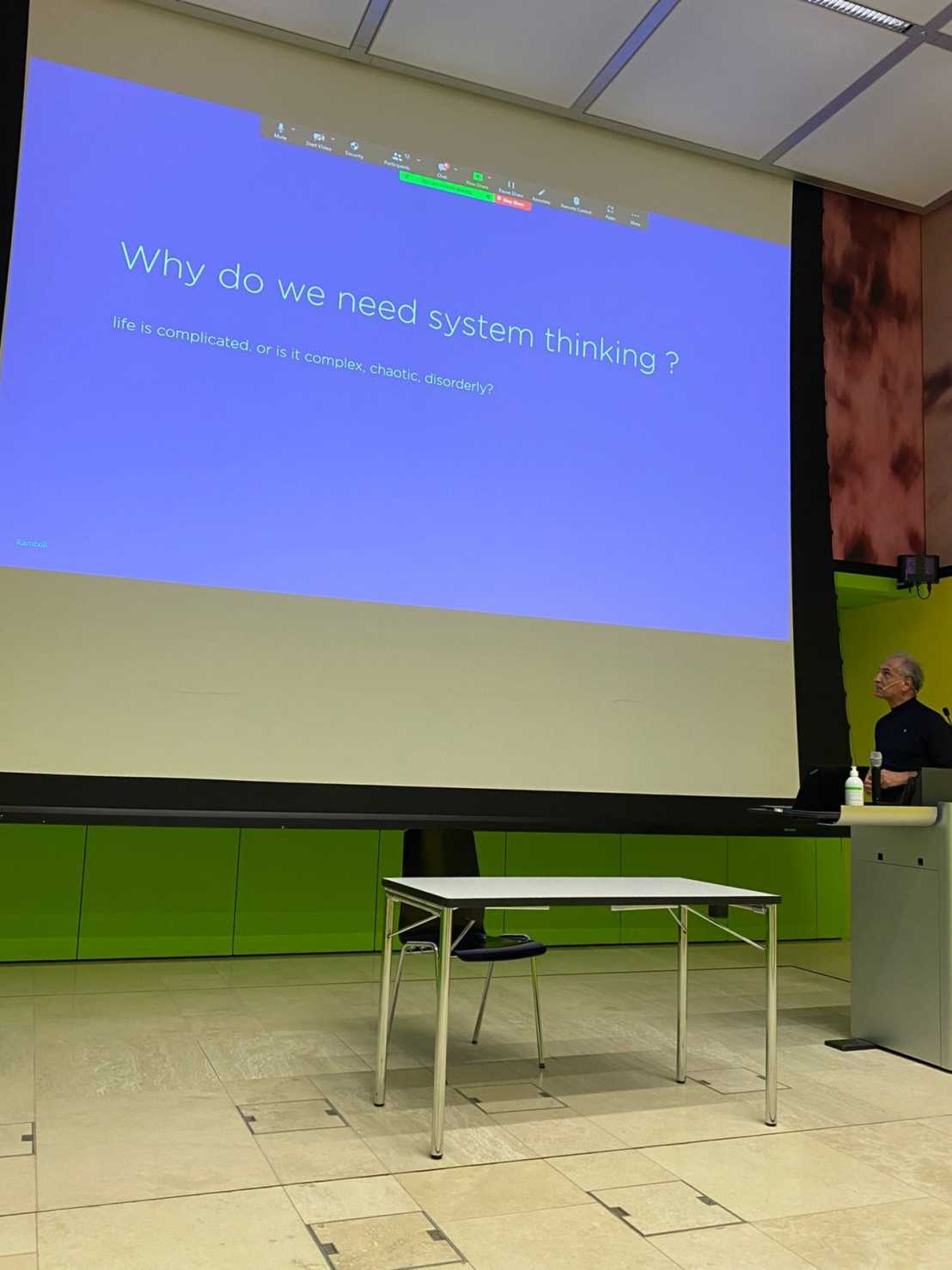Climate Seminar Series: "Once you see in systems, you can’t unsee it"
Dr. Hossein Rezai from Singapore gave a talk on 'Of Systems, Complexity and Regeneration' at ETH Hönggerberg on 13 March 2023. The seminar was organised by the Green Team of the PhD and Postdoc Association at PSI and supported by MaP Doctoral School.

In his presentation, Dr. Hossein Rezai, who is the founder of external page Web Structures, distilled regenerative worldview, system thinking, and complexity, and made it clear to the audience that “once you see in systems, you can’t unsee it".
He started the talk with a prelude, explaining why “regenerative” is not “sustainable”: he talked about carbon, biodiversity, inequality, and that the global chemical usage is expected to double between 2019 - 2030. In his opinion, only with Regenerative Thinking will the world be able to reach the 1.5 ºC scenario.
After this, he explained the different meaning of systems starting with some definitions:
- “A system is a whole, comprising 2 or more components working together interactively, to produce an outcome (a product or a service) that none of the parts, or any sub-settings of them, could produce on their own.”
- “A system is a whole, comprising 2 or more components working together interactively, to produce an outcome (a product or a service) that none of the parts, or any sub-settings of them, could produce on their own.”
Why do we need system thinking? Life is complicated. Or is it complex, chaotic, disorderly? He explained the differences between a simple, complicated, complex, chaotic and disorderly system.
How do we improve a system? Improving parts AND interconnections. “If we have a system of improvement that is directed at improving performance of the parts taken separately, you can be absolutely sure that the performance of the whole will not be improved.
Next he talked about the regeneration and the ecology of regenerative design. He showed that water, edges, co-existence, colours, politics, shades, vegetation, economy, air, collaboration, lines, sound, solids, biodiversity, justice, voids, are all factors to take in consideration during a regenerative design chart with an opportunity matrix. Regenerative thinking: a regenerative future for a degenerative past. He showed the contraposition between the natural environment and the built environment explaining what is the vision for the regenerative environment.
Taking the Centre Pompidou in Paris as an example, he demonstrated the importance of the site, the street, the neighborhood, the city grid, the city (Paris), the country (France), the planet, the tree, the bird and the ladybird. To be able to take into consideration all these factors we need to use the 3 main pillars of the regenerative thinking, which are: 1) regenerative design, 2) augmented design and 3) purposeful design.
Following the talk and a round of questions, the participants enjoyed drinks and snacks offered by MaP Doctoral School and continued their discussions with Dr. Hossein Rezai.
Text: Anna Nastruzzi, Green Team of the PhD and Postdoc Association at PSI & Barbara Lau (MaP Doctoral School)